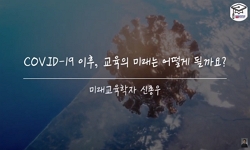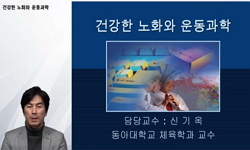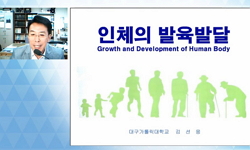The purpose of the study is to investigate the physical activity and psychological state of adolescents in the COVID-19 situation, and to examine the correlation between the quality of life and the psychological state according to the reporting method...
http://chineseinput.net/에서 pinyin(병음)방식으로 중국어를 변환할 수 있습니다.
변환된 중국어를 복사하여 사용하시면 됩니다.
- 中文 을 입력하시려면 zhongwen을 입력하시고 space를누르시면됩니다.
- 北京 을 입력하시려면 beijing을 입력하시고 space를 누르시면 됩니다.

코로나바이러스 감염증-19(COVID-19) 확산을 경험하는 청소년의 신체활동과 심리상태 = Physical activity and psychological state of adolescents experiencing the spread of coronavirus disease 19 (COVID-19)
한글로보기https://www.riss.kr/link?id=A108146324
- 저자
- 발행기관
- 학술지명
- 권호사항
-
발행연도
2022
-
작성언어
Korean
- 주제어
-
등재정보
KCI등재
-
자료형태
학술저널
-
수록면
207-218(12쪽)
-
KCI 피인용횟수
0
- 제공처
-
0
상세조회 -
0
다운로드
부가정보
다국어 초록 (Multilingual Abstract)
The purpose of the study is to investigate the physical activity and psychological state of adolescents in the COVID-19 situation, and to examine the correlation between the quality of life and the psychological state according to the reporting method. Data were collected from 624 middle and high school students and 68 of their parents through an online survey. As a result of the analysis, the level of physical activity decreased after COVID-19, and the intensity of physical activity also decreased. There was no correlation with the psychological variables according to the difference in the number of times of going to school, but there was a positive correlation between motor behavior, exercise adherence, self-efficacy, and the quality of life with the level of physical activity. In addition, there was a positive correlation among the variables of motor behavior, exercise adherence, pleasure, self-efficacy, and the quality of life. For the quality of life of adolescents, males were higher than females in the physical domain, and in all domains except for the social domain and emotion domain, the score of 17-year-old was lower than that of other young age groups. Also, the quality of life according to the students' report showed a positive correlation with motor behavior, exercise adherence, pleasure, and self-efficacy, but the quality of life according to the parents' report showed no correlation with psychological variables. In the difference between parent and child reports on the quality of life, negative correlation was found in social domain and reinforcement during exercise adherence. Therefore, considering the differences according to the adolescents' physical activity and self and parental perceptions according to gender and age, it is necessary to develop a program that allows adolescents to participate in physical activities in a healthy way. Therefore, considering the differences in physical activity and self and parental perceptions according to the gender and age of adolescents, a program is needed for not only physical health but also psychological well-being by promoting physical activity of adolescents. In addition, there is a need to respond at home and at school to various changes due to reduced physical activity after COVID-19.
참고문헌 (Reference)
1 오지연 ; 양윤준 ; 김병성 ; 강재헌, "한국어판 단문형 국제신처활동설문(IPAQ)의 신뢰도와 타당도" 대한가정의학회 28 (28): 532-541, 2007
2 신승배, "한국 청소년 삶의 질 결정요인" 사회과학연구소 29 (29): 195-217, 2018
3 박윤기 ; 정구인, "학교스포츠클럽 참여 중학생의 신체적 자기효능감과 운동지속의 관계" 한국체육과학회 22 (22): 457-472, 2013
4 보건복지부, "코로나바이러스감염증-19 중앙재난안전대책본부 정례브리핑"
5 박중열, "코로나19로 촉발된 비대면 교육의 대규모 확장" 대한기계학회 9 (9): 1-5, 2021
6 고광혁, "코로나19 상황에서 중학생의 비대면 수업 만족도와 수업몰입의 관계" 한국국제문화교류학회 10 (10): 273-294, 2021
7 강병관 ; 박성제, "코로나 19로 인한 배드민턴 동호인의 운동참여여부에 따른 정신건강과 생활만족 차이분석" 한국웰니스학회 15 (15): 579-588, 2020
8 박중길 ; 이경환, "체육수업에서 학업적-사회적 성취목표가 과제 지속에 미치는 매개 및 중재효과 검증" 한국스포츠심리학회 21 (21): 157-171, 2010
9 박중길 ; 이경환, "체육수업에서 학습 동기화전략의 이해: 성별과 동기분위기 및 성취목표의 중재효과" 한국체육학회 51 (51): 153-166, 2012
10 박중길 ; 이경환, "체육수업에서 기대-가치와 자기 효능감, 과제 난이도가 중학생의 지속행동에 미치는 중재효과" 한국체육학회 50 (50): 251-262, 2011
1 오지연 ; 양윤준 ; 김병성 ; 강재헌, "한국어판 단문형 국제신처활동설문(IPAQ)의 신뢰도와 타당도" 대한가정의학회 28 (28): 532-541, 2007
2 신승배, "한국 청소년 삶의 질 결정요인" 사회과학연구소 29 (29): 195-217, 2018
3 박윤기 ; 정구인, "학교스포츠클럽 참여 중학생의 신체적 자기효능감과 운동지속의 관계" 한국체육과학회 22 (22): 457-472, 2013
4 보건복지부, "코로나바이러스감염증-19 중앙재난안전대책본부 정례브리핑"
5 박중열, "코로나19로 촉발된 비대면 교육의 대규모 확장" 대한기계학회 9 (9): 1-5, 2021
6 고광혁, "코로나19 상황에서 중학생의 비대면 수업 만족도와 수업몰입의 관계" 한국국제문화교류학회 10 (10): 273-294, 2021
7 강병관 ; 박성제, "코로나 19로 인한 배드민턴 동호인의 운동참여여부에 따른 정신건강과 생활만족 차이분석" 한국웰니스학회 15 (15): 579-588, 2020
8 박중길 ; 이경환, "체육수업에서 학업적-사회적 성취목표가 과제 지속에 미치는 매개 및 중재효과 검증" 한국스포츠심리학회 21 (21): 157-171, 2010
9 박중길 ; 이경환, "체육수업에서 학습 동기화전략의 이해: 성별과 동기분위기 및 성취목표의 중재효과" 한국체육학회 51 (51): 153-166, 2012
10 박중길 ; 이경환, "체육수업에서 기대-가치와 자기 효능감, 과제 난이도가 중학생의 지속행동에 미치는 중재효과" 한국체육학회 50 (50): 251-262, 2011
11 박세윤 ; 윤대현 ; 권인선, "청소년의 성별과 신체활동 참가수준에 따른 신체적 자기개념과 생활만족의 관계" 한국체육학회 57 (57): 195-205, 2018
12 최은석, "청소년의 건강관련 삶의 질 측정도구(PedsQL™ 4.0 Generic Core Scale)의 타당도·신뢰도 검증" 연세대학교 대학원 2004
13 박송근 ; 유진, "청소년들의 운동의도와 행동: 자기효능감과 부모지지에 대한 매개 및 조절효과의 통합적 모형" 한국스포츠심리학회 25 (25): 29-44, 2014
14 김정현 ; 천성수, "청소년 자녀의 건강관련 삶의 질에 대한 부모와 자녀의 인식차이가 청소년 우울에 미치는 영향" 한국학교·지역보건교육학회 17 (17): 1-16, 2016
15 오수학, "운동지속수행 검사지의 구인타당화" 2 (2): 39-52, 2000
16 진연경 ; 이현석, "여학생 체육활동 활성화를 위한 학교체육 정책 분석" 한국여성체육학회 30 (30): 89-103, 2016
17 조정환, "여자대학생 건강체력 평가 기준 및 인터넷자료 개발" 1115-1122, 2000
18 김예성 ; 김은정, "아동‧청소년의 스트레스와 삶의 질 관계에서 아침식사, 수면, 신체활동의 조절효과 검증" 한국웰니스학회 16 (16): 201-209, 2021
19 이기봉 ; 박일혁 ; 진성룡, "스포츠활동 특기적성교육이 청소년의 정서행동발달에 미치는 영향" 한국체육교육학회 18 (18): 99-111, 2014
20 엄성호 ; 김병준, "교사의 지도행동에 따른 학생의 체육 내적동기" 한국스포츠심리학회 14 (14): 17-36, 2003
21 Herman, K. M., "Tracking of obesity and physical activity from childhood to adulthood : the Physical Activity Longitudinal Study" 4 (4): 281-288, 2009
22 Armitage, C. J., "The roles of behavioral and implementation intentions in changing physical activity in young children with low socioeconomic status" 32 (32): 2010
23 Lee, E. P. X., "The longitudinal psychological, physical activity, and financial impact of a COVID-19 lockdown on older adults in Singapore : The PIONEER-COVID population-based study" 37 (37): 2022
24 London, B., "Social causes and consequences of rejection sensitivity" 17 (17): 481-506, 2007
25 McAuley, E., "Psychometric properties of the Intrinsic Motivation Inventory in a competitive sport setting : A confirmatory factor analysis" 60 (60): 48-58, 1989
26 Varni, J. W., "PedsQL™ 4.0:Reliability and validity of the Pediatric Quality of Life Inventory™Version 4.0 Generic Core Scales in healthy and patient populations" 800-812, 2001
27 Craig, C. L., "International physical activity questionnaire : 12-country reliability and validity" 35 (35): 1381-1395, 2003
28 Wang, C., "Immediate psychological responses and associated factors during the initial stage of the 2019 coronavirus disease(COVID-19)epidemic among the general population in China" 17 (17): 1729-, 2020
29 Gerharz, E. W., "Current approaches to assessing the quality of life in children and adolescents" 91 (91): 150-154, 2003
30 Corbin, C. B., "Concepts in physical education with laboratories" 1994
31 Parfitt, G., "Children's physical activity and psychological health : the relevance of intensity" 98 (98): 1037-1043, 2009
32 남수미 ; 박혜연 ; 김형남 ; 김민주, "COVID-19 상황에서 무용전공 대학생의 신체활동 및 심리상태" 한국무용학회 21 (21): 15-29, 2021
33 Bates, L. C., "COVID-19 impact on behaviors across the 24-hour day in children and adolescents : physical activity, sedentary behavior, and sleep" 7 (7): 138-, 2020
34 López-Bueno, R., "Association between current physical activity and current perceived anxiety and mood in the initial phase of COVID-19 confinement" 11 : 729-, 2020
35 Viciana, J., "Adolescents’ physical activity levels on physical education and non-physical education days according to gender, age, and weight status" 25 (25): 143-155, 2019
36 Guan, J., "Achievement goals, social goals, and students’ reported persistence and effort in high school physical education" 25 (25): 58-74, 2006
37 Pintrich, P. R, "A manual for the use of the Motivated Strategies for Learning Questionnaire (MSLQ)"
동일학술지(권/호) 다른 논문
-
코로나로 인한 스포츠활동 제한이 노인들의 혈압 및 혈중지질성분에 미치는 영향
- 한국발육발달학회
- 정구열
- 2022
- KCI등재
-
초등학생이 지각하는 무용수업 재미요인이 몰입과 참여지속 의도에 미치는 영향
- 한국발육발달학회
- 방은미
- 2022
- KCI등재
-
비선형 회귀식을 활용한 청소년 체격의 최대 발육연령과 최대 발육속도의 종단적 연구
- 한국발육발달학회
- 김귀백
- 2022
- KCI등재
-
청소년들의 스포츠클럽 활동이 운동참여 동기와 만족감에 미치는 영향
- 한국발육발달학회
- 기미정
- 2022
- KCI등재
분석정보
인용정보 인용지수 설명보기
학술지 이력
| 연월일 | 이력구분 | 이력상세 | 등재구분 |
|---|---|---|---|
| 2028 | 평가예정 | 재인증평가 신청대상 (재인증) | |
| 2022-01-01 | 평가 | 등재학술지 유지 (재인증) |  |
| 2019-01-01 | 평가 | 등재학술지 유지 (계속평가) |  |
| 2016-01-01 | 평가 | 등재학술지 유지 (계속평가) |  |
| 2012-01-01 | 평가 | 등재학술지 유지 (등재유지) |  |
| 2009-01-01 | 평가 | 등재학술지 선정 (등재후보2차) |  |
| 2008-01-01 | 평가 | 등재후보 1차 PASS (등재후보1차) |  |
| 2007-01-01 | 평가 | 등재후보학술지 유지 (등재후보1차) |  |
| 2006-06-22 | 학술지명변경 | 한글명 : 발육발달 -> 한국발육발달학회지 |  |
| 2006-05-16 | 학술지명변경 | 외국어명 : J. of Physical Growth and Motor Developm -> The Korean Journal of Growth and Development |  |
| 2006-01-01 | 평가 | 등재후보학술지 유지 (등재후보1차) |  |
| 2005-01-01 | 평가 | 등재후보학술지 유지 (등재후보1차) |  |
| 2004-01-01 | 평가 | 등재후보 1차 FAIL (등재후보1차) |  |
| 2003-01-01 | 평가 | 등재후보학술지 선정 (신규평가) |  |
학술지 인용정보
| 기준연도 | WOS-KCI 통합IF(2년) | KCIF(2년) | KCIF(3년) |
|---|---|---|---|
| 2016 | 0.88 | 0.88 | 0.93 |
| KCIF(4년) | KCIF(5년) | 중심성지수(3년) | 즉시성지수 |
| 0.99 | 0.95 | 0.83 | 0.09 |




 KCI
KCI DBpia
DBpia






